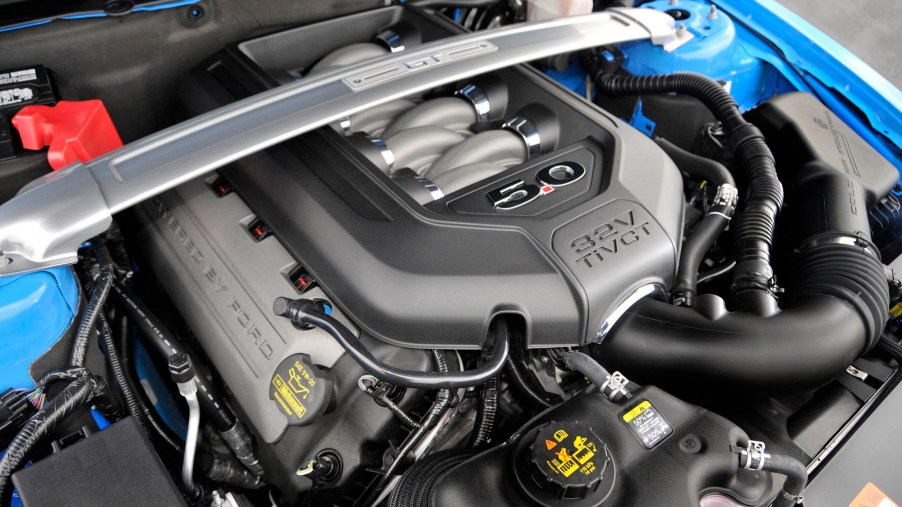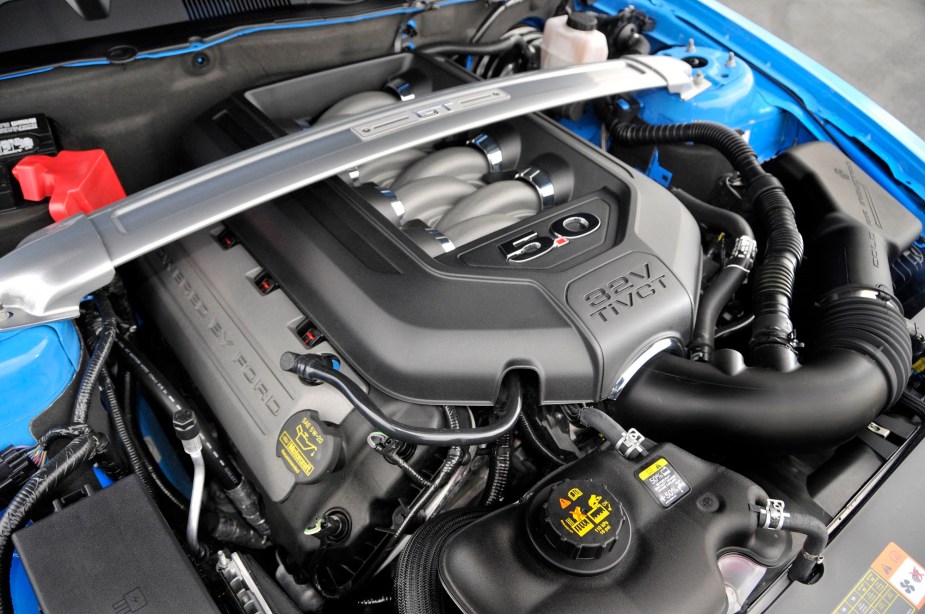
Coyote 5.0 V8: 5 Liters Howling at the Moon
You’ve probably heard it at car meets with muscle cars and hot hatches, “that Coyote motor is a beast!” Or on the other hand, you might hear something along the lines of “Coyote engines don’t sound good.” Either way, the 5.0L V8 is a staple of the modern Ford Mustang. So, what is a Coyote V8, and is it any good?
Is the Coyote V8 a good engine?
Ford’s 5.0L Coyote V8 has a lot to offer. It’s a naturally-aspirated dual-overhead cam (DOHC) platform that makes a lot of usable horsepower from a relatively small bore compared to the high-displacement engines that Chevrolet and Dodge use. It also tends to make more power at higher revs than some competitors. For instance, the latest Coyotes make peak power at around 7,000 rpm with a compression ratio of 12.0:1, compared to the 6.4L R/T Scat Pack’s 6,100 rpm.
Also, the Coyote’s aluminum block and heads equate to lower weight compared to the iron blocks of many Dodge engines. Additionally, Ford’s revolutionary application of Twin Independent Variable Cam Timing (Ti-VCT) allowed for more efficient power production than the previous powerplant. The result is a lightweight, somewhat high-revving 302 cubic-inch V8 engine.

How much horsepower does a 5.0L Coyote V8 engine have?
Although the latest 5.0L engines produce 460 horsepower (450 in the newest GT), it wasn’t always that much. Ford announced the first generation of the 5.0L Coyote for a 2011 model year Mustang, and the results were instantly impressive. The new engine wasn’t much larger than the outgoing package but with higher displacement and 420 horsepower. The gen one package gave way to the gen two motors, which MotorTrend says increased airflow and performance at high revs to the tune of 435 horsepower.
The newest variation, the third generation 5.0L, added direct injection and a slight increase in bore diameter. Ford’s 2018 and newer Coyotes produce 460 horsepower and 420 lb-ft of torque. If that’s not enough, many fans turbocharge, supercharge, or add cam upgrades to the capable platform.
Which cars have a 5.0L engine?
The first Ford car to get the workhorse Coyote was the 2011 Mustang GT. According to Ford Authority, the Boss 302 of 2012 and 2013 bumped the power up to 444 at a much higher 7,500 rpm. The 2015 to 2017 GTs packed the second-generation motors, and the latest 460-horsepower examples have powered the latest S550 Mustang GTs since 2018.
However, it wasn’t just the Ford Mustang. Ford also gave the F-150 pickup truck the Coyote treatment. If you’re looking for a 5.0L-equipped truck, the automaker has been putting the engines in the F-150 since the 2011 model year. Of course, the horsepower figures are lower than the Mustang applications.
Which transmission goes with a 5.0 Coyote?
Fortunately for fans of pure driving experiences, the 5.0L Mustangs still haven’t ditched the manual transmission. Since 2011, Mustang fans could pair the Coyote with a six-speed manual transmission. However, pony car drivers could also choose a series of quick-shifting automatic transmissions. A snappy ten-speed automatic transmission replaced the six-speed automatic in 2018, and that same year, a performance pack-equipped GT hit 60 mph in just 3.9 seconds.
What did it replace?
The strong DOHC Coyote powerplant replaced the “3V” 4.6L Ford V8 engine. The 3V denotes the three-valve construction of the single overhead cam (SOHC) engine. While the 4.6L V8 is capable, it is hopeless to compete with the latest 5.0L motors without significant modification. Scroll down to the following article to read more about Mustangs!



